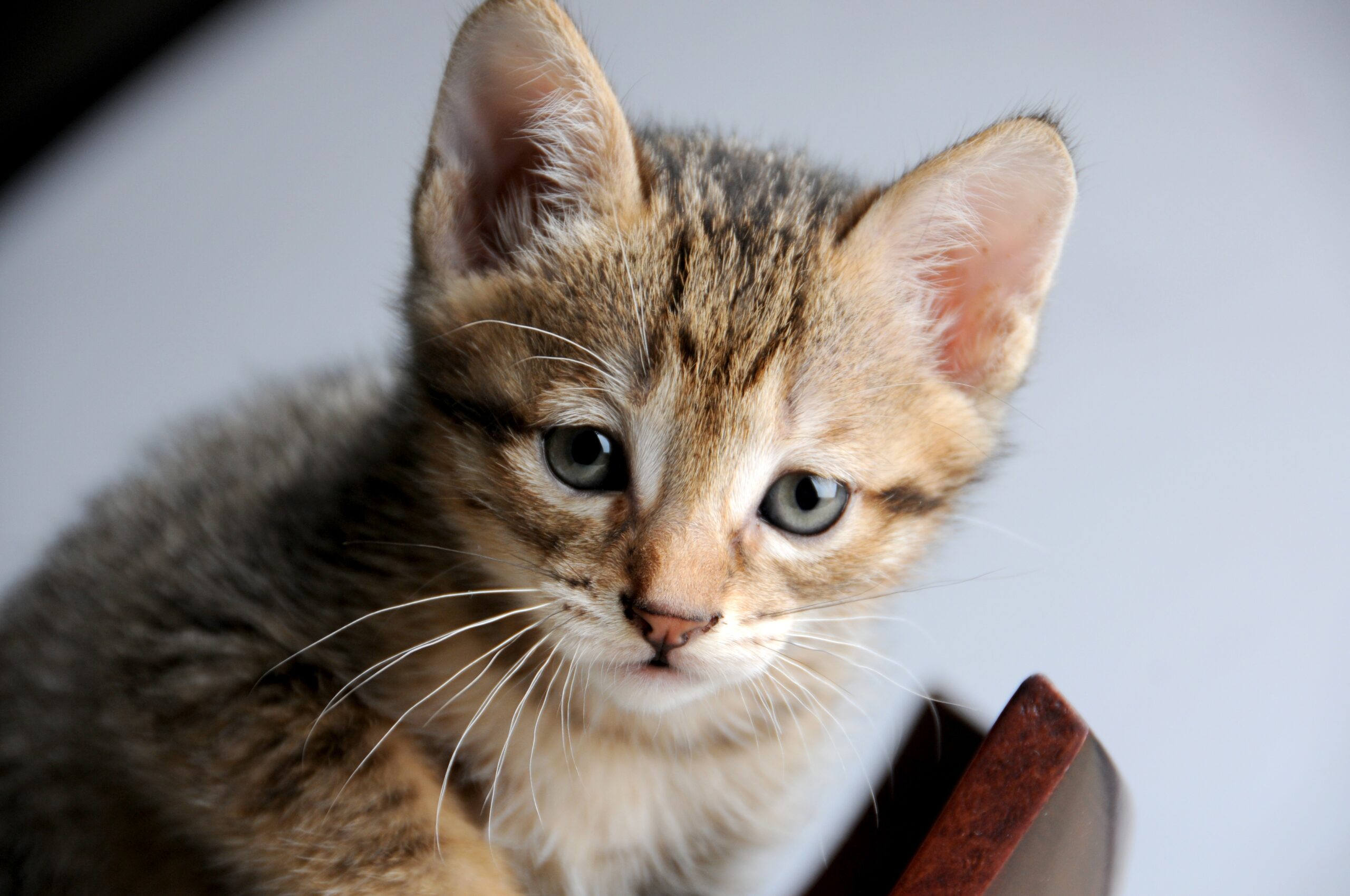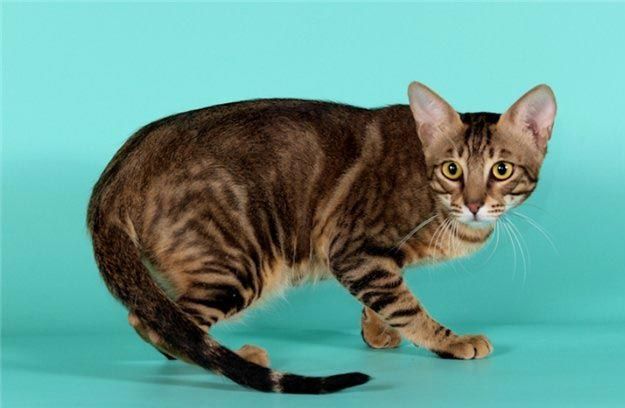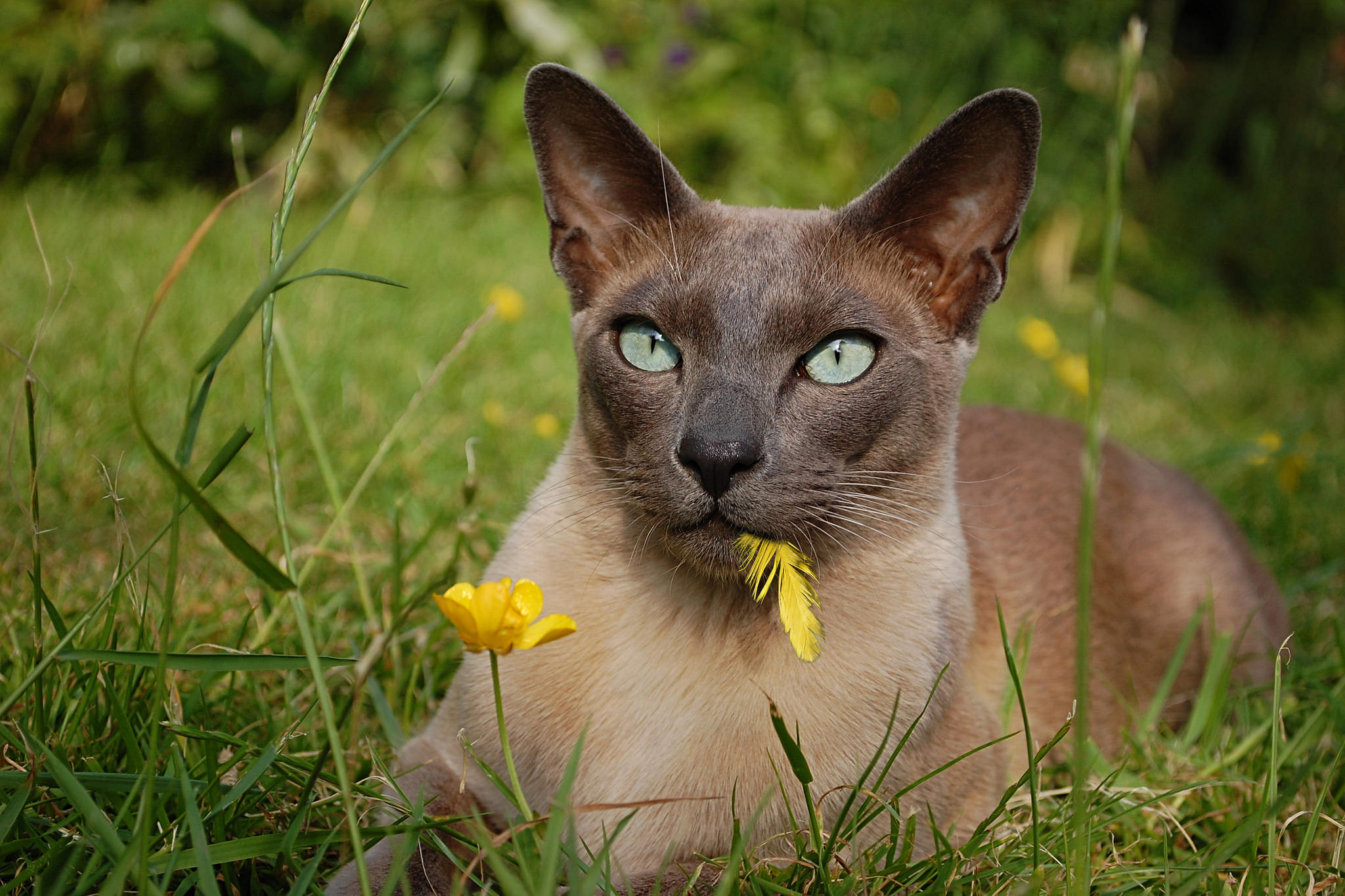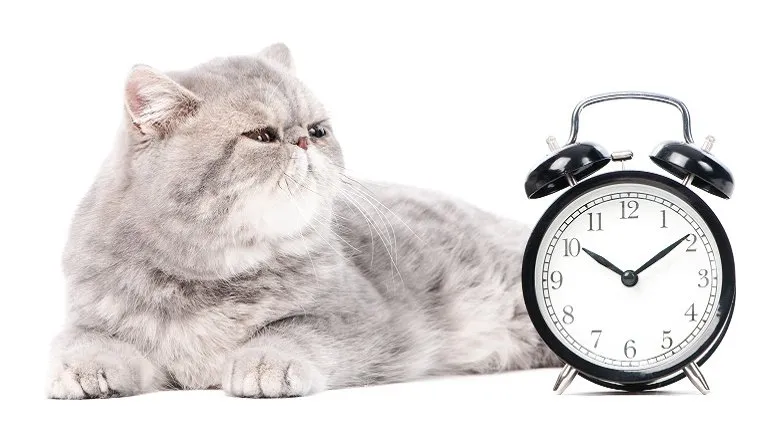Theories Behind Cats’ Behavior Change
Circadian Rhythm Disruption

The end of Daylight Saving Time (DST) has been observed to cause unusual behavior in some cats, with many owners reporting a sudden increase in anxiety, agitation, and hyperactivity in their feline companions.
Circadian rhythm disruption is believed to be the primary cause of this phenomenon. Circadian rhythms refer to the internal biological processes that occur over a 24-hour period, regulating various bodily functions such as sleep-wake cycles, hormone secretion, and metabolism.
When humans observe DST, our clocks ‘fall back’ one hour, effectively reducing daylight exposure by an hour. This change in routine can temporarily confuse our bodies, making it difficult to adjust to the new schedule.
Cats, being highly attuned to their environment and sensitive to changes in light and temperature, are particularly vulnerable to circadian rhythm disruption. In addition, cats’ natural hunting instinct is closely linked to daylight hours, with most wild cat species exhibiting increased activity during dawn and dusk.
The disruption caused by DST can cause a mismatch between the cat’s internal clock and its external environment. As the clocks ‘fall back’, the cat may become confused about the time of day, leading to changes in behavior such as restlessness, vocalization, and hyperactivity.
Some cats may exhibit extreme anxiety or stress responses due to this disruption, which can lead to destructive behavior, such as scratching furniture or eliminating outside of the litter box. In some cases, the cat’s behavior may be misinterpreted by owners, leading to punishment or scolding, further exacerbating the problem.
It is essential for cat owners to recognize that their feline companions are experiencing a legitimate form of stress, rather than simply being ‘bad’ or ‘misbehaving’. By acknowledging and addressing this issue, owners can take steps to mitigate the impact of DST on their cat’s behavior.
This may involve establishing a consistent routine, providing plenty of attention and playtime during the day, and offering environmental enrichment activities to help redirect the cat’s energy. In some cases, medical intervention may be necessary to address underlying issues such as anxiety disorders or sleep problems.
By understanding the impact of circadian rhythm disruption on cats, owners can take proactive steps to minimize the effects of DST and provide a more comfortable and stress-free environment for their feline companions.
The end of Daylight Saving Time (DST) can disrupt a cat’s natural circadian rhythm, leading to behavioral changes.
The end of Daylight Saving Time (DST) can be a challenging time for cats, as it disrupts their natural circadian rhythm, leading to behavioral changes that may seem puzzling or even berserk
Cats are creatures of habit and rely heavily on routine and predictability in their daily lives. Their internal clock is regulated by the 24-hour day-night cycle, with specific physiological processes tied to sunrise and sunset. When DST ends, the time change can throw off this delicate balance, causing cats to become disoriented and experience changes in appetite, sleep patterns, and energy levels.
The primary reason for these changes is that cats’ bodies are sensitive to light exposure. Their eyes contain a type of cell called the intrinsically photosensitive retina (ipRGC), which helps regulate their circadian rhythm. When daylight saving time ends, and clocks “fall back,” the shorter days can cause this sensitivity to light to go into overdrive, making it more difficult for cats to adjust.
Cats may exhibit a range of behavioral changes following the end of DST, including increased agitation, irritability, and restlessness. Some may become more vocal or demanding, while others might retreat to quiet spaces in the home, feeling overwhelmed by their surroundings. In extreme cases, cats may even exhibit self-soothing behaviors, such as excessive grooming or pacing.
Some cat owners may notice that their feline friends seem disoriented and struggle to adjust to the new sleep schedule. This can lead to turbulent nighttime routines, with cats waking up more frequently, demanding attention, or displaying an increased desire for vertical space. It’s essential for cat owners to maintain a consistent daily routine, including regular feeding times and play sessions, to help their cats adjust to the time change.
It’s also crucial to consider providing additional mental stimulation and enrichment activities during this period. Engage your cat in interactive play, offer puzzle toys filled with treats, or provide sensory experiences like scratching posts or cozy bedding. By doing so, you can help redirect their attention away from the stress of the time change and towards more positive behaviors.
The end of Daylight Saving Time may seem insignificant to humans, but for cats, it can be a challenging period that disrupts their natural rhythms. However, with patience, understanding, and a few adjustments to your cat’s routine, you can help them adjust and find equilibrium in this new time.
Environmental Factors
Changes in Light Exposure
Cats are creatures of habit and their internal clocks are closely tied to the 24-hour day-night cycle. They have an innate ability to sense changes in light exposure, which helps them regulate their circadian rhythms.
During daylight saving time (DST), the clock “springs forward” by one hour, resulting in a sudden change in the timing of sunlight exposure. Cats, like many other animals, rely on this predictable pattern to synchronize their bodily functions with the external environment.
The end of DST, which marks the transition back to standard time, can cause disruption to these internal clocks. This is because cats are now faced with an unexpected change in light exposure, as the clock “falls back” by one hour.
For some cats, this sudden shift can be quite disorienting. They may exhibit behaviors such as increased restlessness, vocalization, and changes in appetite or sleep patterns. These changes are often a result of the cat’s internal clock trying to adjust to the new timing of sunlight exposure.
The exact reasons behind these behavioral changes are not fully understood, but it is thought that cats may be responding to the following factors:
1. Sunlight duration: Cats have a strong instinctual response to sunlight, which triggers the release of hormones that regulate their circadian rhythms. A change in daylight exposure can disrupt this process.
2. Photoperiodism: This is the response of living organisms to changes in day length and light intensity. Cats, like many other animals, are sensitive to photoperiodic cues, which can affect their reproductive cycles and behavior.
3. Disruption of routine: Cats thrive on predictability and routine. The end of DST can disrupt this sense of security, leading to behavioral changes as the cat tries to adjust to the new schedule.
In some cases, the disruption caused by the end of DST may be more pronounced in cats that are already sensitive or anxious. These individuals may exhibit extreme behaviors such as aggression, pacing, or self-soothing habits like excessive grooming.
While these changes can be concerning for cat owners, it’s essential to remember that they are usually temporary and resolve on their own within a few days to a week. In the meantime, owners can take steps to minimize their cat’s stress and help them adjust to the new schedule:
1. Maintain a consistent routine: Stick to your cat’s regular feeding and playtime schedule as closely as possible.
2. Provide a familiar environment: Keep your cat’s surroundings unchanged, including their bedding, toys, and favorite hiding spots.
3. Offer reassurance: Spend quality time with your cat, engaging in activities that provide comfort and relaxation, such as gentle petting or playtime with a favorite toy.
4. Consider environmental changes: If possible, adjust the lighting in your home to mimic the natural daylight pattern, which can help regulate your cat’s internal clock.
By understanding why the end of DST can drive some cats berserk and taking steps to support their adjustment, you can help minimize the stress caused by this change in light exposure and ensure a smooth transition back to standard time.
Cats are sensitive to light and darkness, which can affect their mood and activity levels. The time change may expose them to different lighting conditions, potentially causing stress.

Cats are known for their unique personalities and quirks, but one aspect that is often overlooked is their sensitivity to light and darkness. While some cats may appear to be perfectly happy navigating through a dark room or adjusting to sudden changes in lighting, others can become quite stressed and anxious when faced with different conditions.
When it comes to the time change associated with the end of Daylight Saving Time (DST), many cat owners begin to notice a shift in their pet’s behavior. For some cats, the change can be quite dramatic, resulting in what may seem like erratic or even “berserk” behavior. But why does this happen?
The answer lies in the way our feline friends perceive light and darkness. While humans tend to adjust easily to changes in lighting, cats have a unique circadian rhythm that is influenced by the sun’s presence or absence. During DST, the later sunset time can disrupt their natural rhythm, leading to confusion and stress.
Some cats may become more active during the evening hours due to the increased light levels, which can be particularly challenging for those who are normally sedate at night. Others may become withdrawn or hide more frequently in response to the changes. The inconsistency can be disorienting, causing them to feel uneasy and on edge.
Cats rely heavily on routine and familiarity, so even small disruptions to their schedule can cause significant stress. When it comes to the end of DST, some cats may struggle to adjust to the earlier sunset time, leading to a period of adjustment that can be quite challenging for both pet and owner alike.
As we transition back to standard time, it’s essential to provide our feline friends with as much support and comfort as possible. This can involve maintaining their regular routine, offering familiar comforts like favorite toys or scratching posts, and providing plenty of opportunities for rest and relaxation.
For those cats that exhibit signs of stress or anxiety due to the time change, there are various strategies available to help them cope. These may include environmental enrichment activities, pheromone therapy, or even simply increasing playtime and exercise. By being aware of their needs and taking steps to accommodate their unique requirements, we can help our feline friends navigate the challenges posed by the end of DST with greater ease.
Ultimately, while some cats may exhibit seemingly erratic behavior due to the time change, it’s essential to remember that they are simply trying to adapt to new circumstances. By showing empathy and understanding, we can provide them with the support they need to navigate this challenging period with confidence and poise.
Humans’ Behavior Change
Different Interactions and Schedules
By understanding the changes in interaction patterns and schedules caused by DST, cat owners can take steps to minimize their cat’s stress and anxiety during this period.
Humans often adjust their routines after the time change, which can alter interactions with cats. For example, feeding times or play sessions might be rescheduled, potentially disrupting a cat’s routine.
The end of daylight saving time can bring about significant changes to our daily routines, and these adjustments can have a profound impact on our feline friends. Cats are creatures of habit and thrive on routine, which is often disrupted when we reschedule feeding times or play sessions after the clocks fall back.
Many cat owners report that their usually calm and collected cats become “berserk” as soon as the time change takes effect. This can be attributed to a combination of factors, including changes in feeding schedules, reduced daylight hours, and even subtle shifts in human behavior. Some cats may experience anxiety or stress due to these disruptions, leading to increased vocalization, restlessness, and destructive behavior.
For example, some cat owners find that their usual morning play sessions now coincide with the time when their cats are typically most active at night. This can lead to a miscommunication between humans and cats, resulting in a cat’s pent-up energy being released in an unsuitable manner. Similarly, changes in feeding schedules may cause a cat to become hungry or satisfied at times that no longer align with their usual routine.
Another reason some cats go “berserk” during the end of daylight saving time is due to the change in human behavior. As humans adjust to the new clock schedule, they often engage in more indoor activities, such as watching TV or working on laptops, which can be perceived as competition for attention by cats. This perceived rivalry may lead some cats to become agitated or aggressive towards their human companions.
It’s essential for cat owners to recognize that these changes can affect their feline friends in various ways. By understanding and adapting to these changes, we can help minimize the stress and anxiety our cats experience during this period. This may involve maintaining a consistent routine, providing extra attention and playtime, or even modifying our work-from-home arrangements to accommodate our cats’ needs.
In conclusion, the end of daylight saving time can indeed drive some cats berserk due to disruptions in their routines and interactions with humans. By acknowledging these changes and taking proactive steps to adapt, we can help alleviate stress and promote a more harmonious relationship between humans and cats.
Physiological Changes in Cats
Adrenaline and Cortisol Levels
The end of daylight saving time (DST) is a significant change that can affect various aspects of life, including human and animal behavior. One fascinating phenomenon observed during this period is how some cats become restless and agitated.
One reason behind this feline frenzy is the disruption in their natural circadian rhythm caused by the time change. Cats, like many other animals, have an internal body clock that regulates their sleep-wake cycle. This internal clock is controlled by a complex system involving hormones like adrenaline (also known as epinephrine) and cortisol.
Adrenaline and cortisol are two vital hormones produced by the adrenal glands located on top of the kidneys. Adrenaline, also referred to as the “fight or flight” hormone, is responsible for preparing the body to respond to emergency situations by increasing heart rate, blood pressure, and energy levels. Cortisol, often called the “stress hormone,” helps the body cope with stress, regulating metabolism, immune response, and inflammation.
During DST, the time change can throw off the delicate balance of these hormones in cats. The disruption in their natural routine can lead to an increase in adrenaline levels as they struggle to adapt to the new sleep-wake cycle. This can cause restlessness, anxiety, and irritability in some felines.
Furthermore, the adjustment period after DST can be particularly challenging for older or more sensitive cats. As their internal clock is less responsive to changes, it may take them longer to readjust to the new schedule. During this time, they might experience heightened adrenaline levels, which can manifest as excessive meowing, pacing, and agitation.
It’s worth noting that not all cats are equally affected by the end of DST. Factors such as age, health status, and individual temperament play a significant role in determining how cats respond to this time change. Some may adapt smoothly, while others might require patience and understanding from their human caregivers during this period.
As humans, it’s essential to provide our feline companions with a stable and comforting environment as they navigate the end of DST. By maintaining a consistent routine, ensuring adequate sleep opportunities, and providing engaging activities, we can help alleviate any stress or anxiety caused by the time change. This might include offering extra attention, playtime, and even special treats to soothe their nervous systems.
By being aware of the impact of daylight saving time on cat behavior and taking steps to support them during this adjustment period, we can minimize their distress and ensure a smoother transition back to our usual routines. As with many changes in life, patience and understanding are essential for helping our feline friends adapt and thrive.
Some research suggests that stress caused by changes in DST may lead to increased adrenaline and cortisol levels in cats.

Cats are creatures that thrive on routine and predictability, which is why they can become increasingly agitated when their environment is disrupted. One such disruption occurs at the end of Daylight Saving Time (DST), a bi-annual event where clocks “fall back” an hour in November to begin Standard Time.
The change in time can have a profound impact on cats, leading to increased levels of stress and anxiety. This phenomenon is not unique to felines, as humans also experience disruptions to their circadian rhythms when the clock falls back.
Some research suggests that the stress caused by changes in DST may lead to increased adrenaline and cortisol levels in cats. Adrenaline, a hormone produced by the adrenal glands, prepares the body for “fight or flight” responses to perceived threats. Cortisol, another hormone released by the adrenal glands, plays a crucial role in regulating energy, immune response, and inflammation.
When these stress hormones are elevated in cats, they can lead to a range of behavioral changes, including restlessness, pacing, increased vocalization, and even destructive behavior. This is because the cat’s brain perceives the change in time as a threat to their sense of security and well-being.
The reasons for this phenomenon are multifaceted. Firstly, cats rely on light-dark cycles to regulate their sleep-wake patterns, feeding times, and overall circadian rhythm. When the clock falls back an hour, it can disrupt these rhythms, leading to confusion and disorientation.
Secondly, changes in DST can also affect a cat’s natural instinct to hunt and forage. In the wild, many predators and prey animals are attuned to seasonal patterns of daylight and darkness, which regulate their hunting behavior. When this natural rhythm is disrupted by a change in time, cats may become anxious or agitated, leading to changes in appetite, activity levels, and other behaviors.
Finally, some research suggests that cats may also be sensitive to the disruption caused by DST due to their unique genetic predispositions. As domesticated animals, cats have undergone significant selective breeding for desirable traits such as docility, smaller size, and coat color. However, this selective breeding has also resulted in changes to a cat’s internal biological rhythms, making them more susceptible to disruptions in their natural environment.
In conclusion, the end of Daylight Saving Time can indeed drive some cats berserk due to the stress caused by changes in their routine and environment. While humans may view the clock “falling back” as a welcome relief from the summer heat, our feline friends may experience increased levels of anxiety and agitation. By understanding these underlying mechanisms, we can better support and care for our cats during this time of transition.
- Best LeadsGorilla Alternatives for 2025 - April 19, 2025
- Best Coldlytics Alternatives for 2025 - April 19, 2025
- Best Brevo Alternatives for 2025 - April 18, 2025



